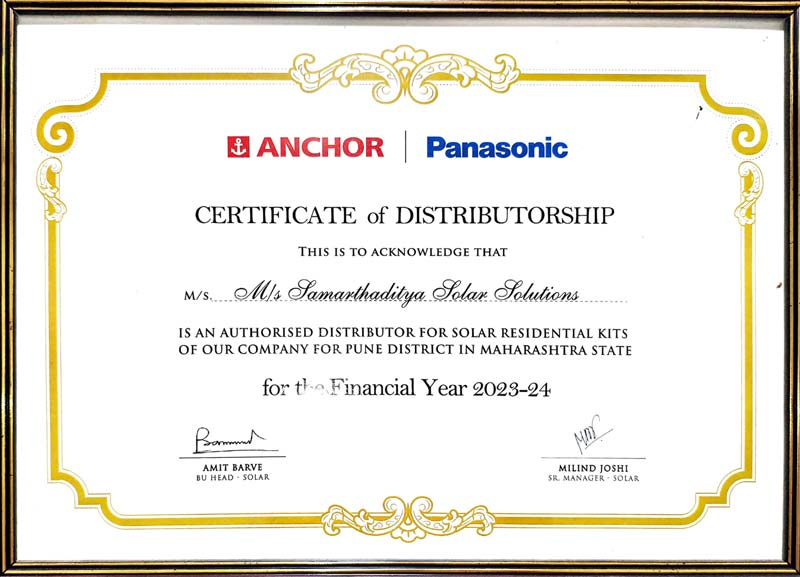CapEx Model (Capital Expenditure)
In the CapEx model, the customer (typically a commercial or industrial entity) purchases the solar power system upfront and owns the system throughout its lifespan. This model is most commonly used when the customer has the capital available or can access financing options to make the initial purchase.
Features of the CapEx Model:
- Ownership: The customer owns the solar system, which means they have full control over the installation, operation, and maintenance.
- High Initial Investment: The customer must pay the entire cost of the system upfront or through financing like loans.
- Incentives & Tax Benefits: The customer can typically take advantage of government incentives, tax rebates, and depreciation benefits (such as the Investment Tax Credit in the U.S. or accelerated depreciation for corporate clients).
- Energy Savings: After the system is paid off, the energy generated is essentially free, providing significant long-term savings on electricity costs.
- Maintenance: The customer is responsible for ongoing maintenance and repairs, though service contracts can be included in the purchase.
Financing Options for CapEx:
- Bank Loans or Solar Loans: The customer can obtain financing through banks or specialized lenders offering loans with low interest rates for solar installations.
- Leasing: The customer leases the equipment and owns the energy savings over time.
- Green Bonds: Some large corporations or municipalities may use green bonds to finance solar projects.
- Power Purchase Agreements (PPAs): While typically associated with the RESCO model, PPAs can sometimes be combined with CapEx to finance the upfront capital.
Advantages
- Full ownership and long-term benefits after system payback.
- The possibility of high ROI due to energy savings.
- Access to tax credits and rebates.
Disdvantages
- High upfront cost, requiring significant capital or financing.
- Responsibility for maintenance, repair, and operation costs.
RESCO Model (Renewable Energy Service Company)
The RESCO model, also known as the Solar-as-a-Service model, is a performance-based approach where a third-party company finances, installs, operates, and maintains the solar system. In this model, the customer does not own the solar system but instead signs an agreement with the RESCO provider for the use of solar energy over a long-term contract (typically 10-25 years).
Features of the RESCO Model:
- No Upfront Cost: The customer does not pay upfront for the solar system. Instead, the third-party developer installs and owns the system.
- Power Purchase Agreement (PPA): The customer signs a PPA with the solar provider, agreeing to buy the electricity generated by the system at a fixed or escalated rate for the contract term.
- Maintenance & Operations: The RESCO provider is responsible for system maintenance, repairs, and performance monitoring.
- Performance Guarantee: The RESCO provider guarantees that the system will generate a certain amount of energy over the life of the agreement, which reduces performance risk for the customer.
- Savings: Customers pay only for the solar energy they use, usually at a lower rate than their current electricity tariff.
Financing Options for RESCO:
- Equity Investment: The RESCO provider may secure equity financing from venture capital or private investors who are willing to fund the solar installation in exchange for future returns.
- Debt Financing: The RESCO provider can take loans or issue green bonds to finance the system’s installation and maintenance.
- Securitization: Large-scale solar projects under RESCO models can be financed through securitization, where future cash flows (from PPAs) are bundled and sold as securities.
- Leasing: In some cases, a third-party leasing company may provide capital to finance the installation, with the customer paying a regular fee.
Advantages
- No initial capital expenditure is required, making it accessible to businesses that lack upfront capital.
- Long-term maintenance and performance risk are managed by the RESCO provider.
- Flexibility in the payment structure with predictable energy costs.
- Customers can focus on their core business rather than managing solar installations.
Disdvantages
- The customer doesn't own the system, which means they don't benefit directly from tax incentives or rebates.
- Over time, energy costs under a PPA can escalate, which may result in higher costs than owning the system outright.
- The long-term nature of the contract may limit flexibility if the business needs to relocate or alter energy requirements.
